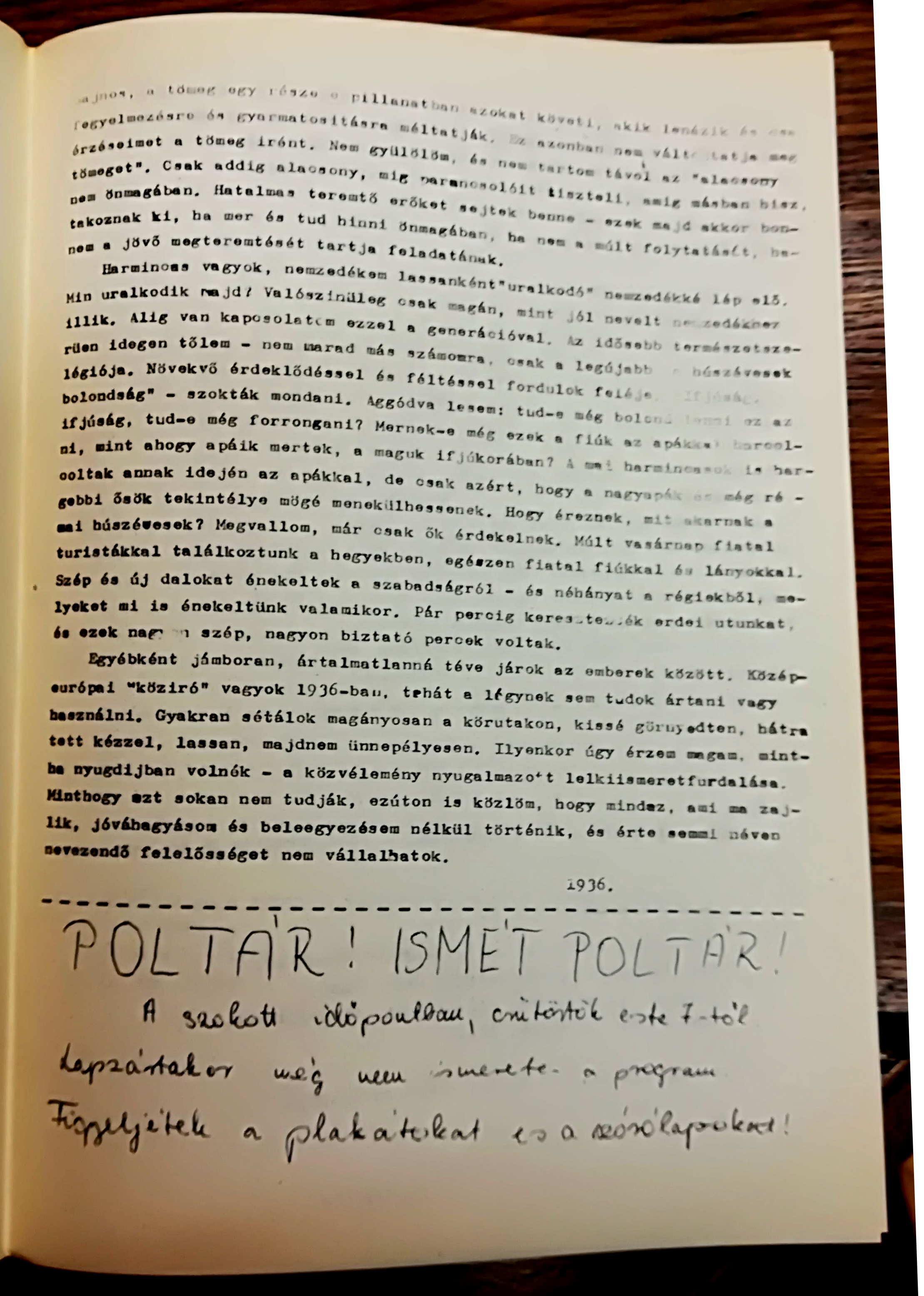The Klub Közlöny (Club Gazette), as the underground newspaper of the Közgáz-klub, is an essential source on the intensive club life, and it showed that the unofficial language used in the phrasing of certain issues interested the students in the 1970s and 1980s. Moreover, the articles in certain cases reflected on the party secretariat’s reactions to student actions.
The issues of Klub Közlöny were preserved in the archive of the Corvinus University (the former MKKE) and in the National Széchényi Library, in both places incomplete, mainly items from the 1980s. The homemade, type-written papers in A4 format were published weekly or biweekly. According to the masthead, it was made in the “copier workshop of the MKKE.” The publisher was Gyula Jobbágy from 1976 until 1981, when he was removed from his teaching position and forced to emigrate. He had a key role in the thriving club life.
Before 1981, the newspaper started with a comic series titled “Timur csodái” (Timur’s miracles) on the cover page. For example, in the issue of the 10th of November 1980, we can read a chapter titled “Élet és tudomány/ mini monodráma a vakolatról/ avagy Timur és a háló [Life and science/ mini monodrama about plaster/ or Timur and the web,” with the motto “Minden életveszély csak 3 napig tart [All dangers to life last only for 3 days].” This fictional comedy actually referred to a real event that was written about in the same issue, titled “The web.” The club members wanted to organize a folk festival in the aula of the university, but the first safety engineer estimated that the hall was life-threatening and he wanted to ban the event. The students set up a web against the falling plaster and finally held the festival. Some days later, surprisingly the immediate danger suddenly disappeared. This story alluded to how the leaders of the university tried to prevent the programs of the club in various ways.
In Klub Közlöny we can find traces of the authorized intervention of the political police and party leadership into the club’s activities and the suppressing of the students’ independent organization named ‘Meeting of Students from Universities and Colleges in Budapest’ (Budapesti Egyetemisták és Főiskolások Találkozója – BEFŐT) in 1981. After this, more moderated articles, less original written content, and more reproduced news were published. The authors focused more and more on the inner life of the university – exams, courses, education of the economists – instead of the caricaturing of ‘power.’ The cultural articles, film and book reviews remained. After the functioning of BEFŐT was made impossible, Timur’s adventure ended as well. Some of the cover pages simply printed the programs of the club.
The editors of the bulletin themselves answered this change. According to the issue of the 29th of April 1981, the readers were dissatisfied with the newspaper because it became grey, trite, and they lost their own voice. The main editor wrote that the university senate gave them permission to publish a new periodical Közgáz Közlöny on the condition of avoiding articles that “need journalistic activity,” in other words, only the duplicated content could remain.
After the Polish Solidarity movement, the intensifying attacks of the communist party had an effect in the later years as well. One issue from February 1983 was about the agony of the Közgáz-klub. At this time, the political club – earlier named Polvax, now renamed Poltár – was restarted thanks to László Szentirmay. The organizers asked for the students’ help, but the initial enthusiasm did not last long. Poltár ended two years later. According to the article informing the students about its closure, László Szentirmay said that Polvax did not become a real debate forum because the students went to the programs not to argue but only to obtain information. Debates were no longer a part of everyday life. Without this, the debate club could function only as safety valve, which was against the basic principle and purpose of Polvax/Poltár.
The
Közgáz Közlöny mirrored the ideas and conception of the Közgáz-klub, and in this framework, Gyula Jobbágy and his ever-growing number of fellows tried to compel reform within the communist styled educational system. László Szentirmay, one of the editors and club organizers, in his interview felt that neither he nor Gyula Jobbágy were persons of the opposition. They wanted to create a genuine, independent forum representing students’ self-interest instead of the “bureaucratic and bloody-minded KISZ [Communist Youth League].” They wanted to bring about that questioning, self-conscious acts become a natural part of students’ lives. He said they belonged to the so-called “secondary movements” that stood between the official KISZ and the very small opposition groups, and which attempted to operate “within the established frameworks, though at the same time to push the envelope.”


